
Saint-Jean-de-Luz: A passion for family surfing

Surfing in Biarritz: all the dangers to avoid!
The Côte des Basques in Biarritz is an enchanting destination nestling on the Atlantic coast of south-west France. Known for its breathtaking scenery, surf-perfect waves and elegant atmosphere, this region has captured the hearts of many travellers over the centuries. In this book, we invite you to discover the stories and secrets that have shaped the Côte des Basques and made it such an iconic place.
Contenus de la page
The birth of a coastal jewel
In the early days, when the first rays of sunlight caressed the steep cliffs of the Côte des Basques, wild nature reigned supreme. This chapter takes you on a journey through time, from the geological origins of this spectacular coastline to its emergence as a popular destination.
The Côte des Basques owes its name to the Basques, an ancient people whose roots run deep in the region’s history. The first inhabitants of Biarritz were fishermen and hunters, who found refuge in this exceptional seascape. Through stories handed down from generation to generation, we discover the first interactions between man and the sea.
The arrival of the Romans in these lands was a major turning point. They recognised the natural beauty of the coast and established settlements there. Archaeological remains bear witness to their presence and the influence they had on the region.
However, it was in the 19th century that the Côte des Basques really took off. The discovery of the therapeutic benefits of seawater attracted the attention of aristocrats and wealthy travellers. Biarritz quickly became the destination of choice for high society, with the construction of sumptuous palaces and the creation of a luxurious atmosphere.
This chapter plunges you into the heart of this golden era, where you will meet illustrious figures such as Empress Eugenie, wife of Napoleon III, who helped to popularise Biarritz by establishing a summer residence here. The sumptuous hotels of the Belle Époque welcomed personalities from all over the world, from famous writers to aristocrats seeking relaxation and entertainment.
As you turn the pages, you will also discover the evolution of architecture along the coast. Elegant villas in a variety of styles have sprung up, harmoniously blending Basque, English and French influences. These emblematic buildings tell the story of Biarritz and its architectural development over the decades.
By exploring the origins of the Côte des Basques, this chapter takes you back to a bygone era when unspoilt wilderness blended with luxury and refinement. It prepares you to dive deeper into the stories and secrets of this fascinating region, through the forthcoming chapters of this captivating book.
The historical origins of Biarritz
In this chapter, we delve into the historical origins of Biarritz, a town with a rich past. Located in the Basque Country, Biarritz has witnessed many events and experienced many influences over the centuries.
We go back to ancient times, when the first traces of human settlement appeared in the region. The Basques, an indigenous people, established their communities along the coast, living in harmony with the surrounding nature. Their traditions, language and culture have left an indelible mark on Biarritz.
Over time, other cultures have left their mark on the town. The Romans established colonies and exploited the region’s natural resources. Archaeological remains bear witness to their presence and influence.
During the Middle Ages, Biarritz was a small fishing village. The inhabitants made their living mainly from the sea and maritime trade. Viking raids and regional conflicts sometimes disturbed the town’s tranquillity, but Biarritz was able to resist and prosper.
However, it was not until the 19th century that Biarritz began to attract attention as a popular seaside resort. Empress Eugenie, wife of Napoleon III, discovered the charms of Biarritz and made it her summer residence. Her influence attracted high society and contributed to the town’s growing renown.
The development of seaside tourism transformed Biarritz. Numerous luxury hotels have been built, offering first-class comfort and services to visitors. The magnificent beaches of the Côte des Basques attracted bathers and water sports enthusiasts from all over the world.
Today, Biarritz is an internationally renowned tourist destination, harmoniously blending its Basque heritage with a cosmopolitan atmosphere. The lively streets of the city centre, the colourful markets and the traditional festivals all bear witness to the vitality of this unique town.
This chapter invites you to delve into Biarritz’s fascinating history, discovering its Basque roots and the influences that have shaped its identity. It lays the foundations for the following chapters, which will explore in greater detail the cultural, artistic, culinary and natural aspects of this enchanting destination.
The rise of seaside tourism
In this chapter, we look at the rise of seaside tourism in Biarritz, a phenomenon that has transformed the town and propelled it onto the international stage.
In the 19th century, the discovery of the therapeutic benefits of seawater attracted the first visitors to Biarritz. The wealthy and the upper classes were quick to recognise the benefits of bathing and sea cures for health and well-being. Biarritz became a fashionable destination, coveted for its fine sandy beaches and soothing waters.
The construction of luxurious seaside resorts has kept pace with the growing demand from travellers. Sumptuous hotels, such as the iconic Hôtel du Palais, were built to accommodate wealthy visitors. These establishments offered first-class comfort and services, with breathtaking ocean views and lush gardens.
The development of infrastructure also encouraged the growth of tourism in Biarritz. Casinos, theatres and concert halls have been built to entertain visitors. Fine restaurants opened their doors, offering quality local and international cuisine.
Surfing also played a major role in Biarritz‘s tourist appeal. In the 1950s, surfers from all over the world discovered the waves of the Côte des Basques, making the town one of Europe’s surfing hotspots. Today, Biarritz hosts international surfing competitions and attracts surfing enthusiasts from all over the world.
As well as the pleasures of the beach and water sports, visitors have also been seduced by the natural beauty of the region. The steep cliffs, lush green landscapes and breathtaking panoramas have attracted nature lovers and hikers alike.
Biarritz has retained its old-world charm while adapting to the needs of modern travellers. The tourist infrastructure continues to develop, offering accommodation to suit all budgets and a variety of activities to suit all tastes.
This chapter transports you into the intoxicating atmosphere of seaside tourism in Biarritz. It allows you to relive the excitement that attracted the first visitors and helped put the town on the world tourism map. In the chapters that follow, we’ll explore the breathtaking landscapes of the Côte des Basques and the many activities it has to offer visitors.
The breathtaking landscapes of the Basque Coast
This chapter is an invitation to explore the breathtaking landscapes of the Côte des Basques, which make Biarritz an exceptional natural destination.
The Côte des Basques offers a breathtaking panorama, harmoniously blending the power of the Atlantic Ocean with the wild beauty of the surrounding countryside. The steep cliffs, covered in lush vegetation, plunge into the rough sea, creating a striking contrast.
The fine sandy beaches stretch for miles along the coast, offering visitors an ideal place to relax, stroll and soak up the sun. The beach on the Côte des Basques is particularly popular with surfers, attracting enthusiasts from all over the world.
Venture along the coastal paths and you’ll discover spectacular panoramas. The cliffs offer breathtaking views of the raging ocean, crashing waves and blazing sunsets. You can admire the power of nature and feel the immensity of the ocean stretching as far as the eye can see.
Nature lovers will also be delighted by Biarritz’s hinterland. The green hills, dense forests and winding rivers create a natural backdrop for hiking, birdwatching and discovering the local flora and fauna.
The region’s iconic natural sites include the Rocher de la Vierge, a rocky promontory overlooking the sea, and the Phare de Biarritz lighthouse, which offers panoramic views of the surrounding area. You can also explore the Lac Mouriscot nature reserve, home to a variety of migratory birds.
The Côte des Basques is a nature lover’s paradise, with stunning scenery around every corner. Whether you want to relax on the beach, venture out on the hiking trails or simply soak up the splendour of nature, this region is sure to amaze you.
This chapter invites you to discover the natural treasures of the Côte des Basques, which make Biarritz such a unique destination. In the following chapters, we’ll explore the legends and myths of the region, as well as the rich Basque culture that contributes to the magic of this place.
Legends and mysteries of the Basque Coast
The Basque Coast is full of legends and mysteries that add to its mystical aura and capture the imagination of visitors. This chapter plunges you into the fascinating world of ancestral tales and mystical stories that surround this region.
One of the most famous legends is that of the Virgin Rock. According to tradition, a young Basque woman named Marion was condemned to be thrown into the sea because of her forbidden love for an English sailor. However, a miraculous wave formed a protective rock around her, enabling her to survive. Since then, the Virgin’s Rock has become a symbol of protection and good fortune.
Another legend tells the story of the Château d’Ilbarritz, an imposing residence located near the Côte des Basques. It is said that a Moorish princess was imprisoned in the depths of the castle, guarding a hidden treasure. Some even claim to have heard her weeping and wailing on the nights of the full moon.
Basque legends are also filled with mythical creatures. Basajaunak’ are woodland creatures who protect nature, living in the forests and looking after animals and plants. Lamias’ are golden-haired women who enchant lost travellers and lead them towards uncertain destinies.
Basque culture itself is steeped in mystery and ancestral rituals. The ‘Euskal Jaiak’, or Basque festivals, are an opportunity to celebrate local traditions through dance, song and traditional sports such as Basque pelota. A capella singing, known as ‘bertsularisme’, transports listeners into a spellbinding world of poetry and melody.
This chapter takes you into the world of legends and mysteries that inhabit the Basque Coast. These captivating tales bear witness to theimportance of oral culture and the richness of the Basque heritage. In the chapters to come, we’ll explore Basque cuisine, renowned for its diversity and quality, as well as the region’s unique artistic expressions.
Basque artistic expressions
This chapter transports you into the rich and diverse world of Basque artistic expression, reflecting the creative and passionate soul of the Biarritz region.
Music occupies a central place in Basque culture. Traditional songs, known as ‘Basque songs’, are a poetic and melodic form of expression that tell the story and emotions of the Basque people. The powerful voices and haunting harmonies transport you into a world of melancholy and pride.
Basque dance is another of the region’s emblematic forms of artistic expression. Traditional dances such as jota and mutxiko are performed with grace and energy. The colourful costumes and rhythmic movements bear witness to the cultural identity and deep attachment of the Basque people to their traditions.
Local crafts are also an important aspect of Basque artistic expression. Talented craftsmen perpetuate age-old skills in areas such as pottery, woodcarving, weaving and embroidery. Each piece created is the result of meticulous work and reflects the authenticity and identity of Basque culture.
Basque literature has also played a significant role in preserving the language and culture. Basque writers have given life through their words, telling captivating stories and passing on the values and traditions of the Basque people. The works of these writers are a window onto the soul of the region, inviting a deeper exploration of its cultural richness.
Contemporary art also has its place on the Basque art scene. Dynamic art galleries exhibit works by local and international artists, offering a modern and innovative perspective on art. Installations, paintings and sculptures captivate visitors and stimulate reflection.
This chapter invites you to delve into Basque artistic expressions, exploring the songs, dances, crafts and literature that make the Biarritz region tick. Discover the creative and passionate soul of this people through its unique forms of expression. In the following chapters, we will explore the fascinating history of Biarritz and its evolution as a renowned tourist destination.
The fascinating history of Biarritz
This chapter plunges you into the fascinating history of Biarritz, a town that has evolved remarkably over the centuries to become a renowned tourist destination.
The first traces of human occupation in Biarritz date back to prehistoric times, as evidenced by archaeological finds. However, it was in the 19th century that Biarritz really began to develop, thanks to the growing interest of members of the nobility and aristocracy.
Originally a modest fishing village, Biarritz’s fame began to grow when Empress Eugenie, wife of Napoleon III, discovered the benefits of sea bathing in the area. The presence of the Empress attracted the attention of European high society, who began to flock to Biarritz to enjoy its beaches and favourable climate.
Biarritz’s rise as a chic seaside resort was marked by the construction of luxurious palaces and elegant villas, which transformed the town’s landscape. Famous personalities such as Queen Victoria of England, the Duchess of Alba and King Edward VII contributed to Biarritz’s fame by regularly staying here.
Over the years, Biarritz has continued to develop as a popular tourist destination, attracting visitors from all over the world. The town has preserved its architectural and landscape heritage while offering modern facilities to meet travellers’ expectations.
Biarritz’s history is closely linked to the Atlantic Ocean, which has shaped its identity. Surfing gained popularity in the 1950s, making Biarritz one of Europe’s surfing hotspots. Today, the town hosts international competitions and attracts surfing enthusiasts.
Biarritz has also been the scene of historic moments such as international summits and diplomatic conferences. The city has hosted the G7 summit in 2019, highlighting its role in international affairs.
This chapter takes you on a journey through time to discover Biarritz’s captivating history, from its humble origins as a fishing village to its worldwide renown as a popular tourist destination. In the chapters that follow, we’ll explore the city’s iconic attractions and the activities that make it an ideal getaway.
The treasures of Biarritz
This chapter guides you through the treasures of Biarritz, revealing the iconic attractions and must-do activities that make this city such an ideal getaway destination:
Biarritz lighthouse
The Biarritz lighthouse is an iconic monument located on France’s Atlantic coast. It offers spectacular panoramic views of the ocean and surrounding area. It is a popular landmark and tourist attraction.
Miramar beach
Miramar beach is a magnificent stretch of fine sand near the Biarritz lighthouse. It is renowned for its natural beauty and peaceful atmosphere. Visitors can soak up the sun, swim in the crystal-clear ocean waters and relax on the shore.
Patisserie at the foot of the casino and the old Belle Vue
At the foot of the casino and the old Belle Vue, you’ll find a delicious patisserie offering a wide range of traditional French pastries. Gourmets can enjoy fresh croissants, chocolate éclairs, colourful macaroons and many other sweet delights.
Place Saint-Eugénie – Church
Place Saint-Eugénie is a charming public space near the church of the same name. This picturesque square offers a warm, authentic atmosphere with its cafés, restaurants and shops. Visitors can stroll along the cobbled streets and admire the traditional architecture.
Fishermen’s port
Biarritz’s fishermen’s port is a place where colourful boats and fishing nets blend harmoniously. Visitors can watch the fishermen unload their catch of the day and buy fresh fish directly from the fish market stalls.
Musée de la Mer
The Musée de la Mer is a must-see for lovers of marine life. It houses an impressive collection of marine species, from sharks to turtles and tropical fish. Visitors can learn more about the region’s marine ecosystem and discover interactive exhibits.
Beach of Port Vieux
The beach at Port Vieux is a small cove close to the Musée de la Mer. It offers a picturesque and intimate setting, ideal for relaxing and soaking up the sun. Visitors can swim in the calm, clear waters of this secluded beach.
Villa Beliza
Villa Beliza is a superb historic building overlooking Port Vieux beach. Its elegant architecture and privileged location make it a popular tourist attraction. Visitors can admire this majestic residence and enjoy panoramic ocean views from its surroundings.
Grande Plage de la Côte des Basques
The Grande Plage de la Côte des Basques is one of Biarritz’s most famous beaches. It stretches for a long distance along the coast and is renowned for its spectacular waves, making it a popular surfing spot. Visitors can stroll along the shore, swim in the ocean or watch the experienced surfers challenge the waves.
Biarritz’s remarkable architecture
This chapter invites you to discover Biarritz’s remarkable architecture, which harmoniously blends traditional styles with contemporary influences.
Biarritz is full of historic buildings and elegant villas that bear witness to its rich past. One of the most emblematic examples is the Casino Municipal, built in 1929 in a neo-Renaissance style. With its ornate façade, wrought-iron balconies and imposing dome, the Casino is a true architectural gem.
Villa Belza is another of Biarritz’s architectural treasures. Built at the end of the 19th century, this neo-Gothic villa overlooks the beach on the Côte des Basques. Its mysterious allure and turrets give the villa a unique charm.
The Chapelle Impériale is another of Biarritz’s iconic buildings. Built at the request of Empress Eugénie, wife of Napoleon III, the chapel is neo-Gothic in style and houses the tombs of the empress and her husband. Its richly decorated interior with colourful stained glass windows creates a peaceful and majestic atmosphere.
As well as historic buildings, Biarritz is also home to some remarkable examples of contemporary architecture. The Bellevue, a conference and entertainment centre inaugurated in 1993, has a bold, modern design. Its rounded shape and façade give it an elegant, contemporary look.
The architecture of the Bellevue is resolutely avant-garde, combining modern materials such as glass and metal. The large bay windows allow plenty of light into the building and provide a visual link with the outside environment.
Inside, the Bellevue offers versatile, modular spaces for hosting a variety of events, such as conferences, exhibitions, concerts and shows. The meeting rooms are equipped with the latest audiovisual technology, providing optimal conditions for presentations and discussions. Biarritz’s contemporary architecture is characterised by bold creations that blend harmoniously into the coastal landscape.
Among these modern buildings is the Musée de la Mer, inaugurated in 1933, which combines Art Deco style with maritime elements. Its elegant appearance and seaside location make it a true symbol of the city.
The Biarritz lighthouse, built in 1834, is another example of remarkable architecture. With its white tower and sober design, it stands proudly on the Pointe Saint-Martin, offering panoramic views of the coast and ocean.
Biarritz’s villas add a touch of charm to the local architecture. The Villa Eugénie, built in 1855 for Empress Eugénie, is a magnificent example of the Second Empire style. Its grandiose architecture, with its wrought-iron balconies and decorative details, recalls the opulence of the imperial era.
Villa Arnaga, near Biarritz, is also worth a visit. Built by the writer Edmond Rostand in the early 20th century, it is a blend of neo-Basque and neo-Louisian styles. Its lush garden and refined interiors bear witness to the artistic taste of its illustrious owner.
Strolling through the streets of Biarritz, you’ll also come across many Basque-style houses, recognisable by their white and red facades, colourful shutters and wooden beams. These traditional houses add a picturesque and authentic atmosphere to the town.
Biarritz’s remarkable architecture bears witness to its cultural heritage and how it has evolved over the centuries. Whether you’re passionate about history, art or simply curious to discover exceptional buildings, Biarritz offers a unique and captivating architectural experience.
The unspoilt nature of Biarritz
This chapter highlights the unspoilt nature of Biarritz, offering visitors a multitude of enchanting landscapes to explore.
Biarritz’s beaches are among the most beautiful on the Atlantic coast. Grande Plage, Plage de la Côte des Basques and Plage de Miramar offer stretches of golden sand bordered by the crystal-clear waters of the ocean. Whether you want to relax in the sun, take part in water sports or simply enjoy a pleasant stroll along the coastline, these beaches have something for everyone.
The steep cliffs that line the coast offer spectacular views. Pointe Saint-Martin, with its impressive rock formations, is a popular spot for walkers and photographers in search of breathtaking views. Hiking trails winding through the cliffs reveal the natural beauty of the region.
The Biarritz lighthouse, perched on a cliff, offers breathtaking panoramic views of the ocean and surrounding area. Visitors can climb its steps to the top to admire the breathtaking scenery.
Biarritz’s public gardens are true havens of peace. The Jardin Public, created in the 19th century, is a lush green space dotted with colourful flowers, fountains and sculptures. Parc Mazon, with its pond and shady paths, is an ideal place for a leisurely stroll or a family picnic.
Biarritz is also surrounded by lush countryside. The green hills of the Pyrenees offer numerous hiking trails for outdoor enthusiasts. Nature reserves, such as the Marais d’Orx Nature Reserve, are home to a variety of flora and fauna, offering visitors the chance to observe rare bird species and discover preserved ecosystems.
This chapter invites you to reconnect with the unspoilt nature of Biarritz, to explore its magnificent beaches, impressive cliffs and peaceful green spaces. In subsequent chapters, we’ll explore the Basque culinary scene, local crafts and other fascinating aspects of this region.
Basque gastronomy in Biarritz
This chapter highlights the rich Basque culinary tradition in Biarritz, offering visitors a unique and delicious taste experience.
Basque gastronomy is renowned for its diversity of flavours, fresh produce and traditional recipes handed down from generation to generation. In Biarritz, you’ll find a host of restaurants, bistros and tapas bars showcasing the delights of Basque cuisine.
Seafood is an important part of Basque cuisine. Biarritz restaurants offer a variety of delicious dishes based on freshly caught fish and seafood. Whether it’s oysters, mussels, prawns or hake, you can enjoy these seafood delicacies prepared with care and accompanied by sauces and spices that enhance their natural flavours.
Piperade is an emblematic dish of the region. It is a preparation of peppers, tomatoes, onions and Espelette chilli pepper, served with ham or eggs. Piperade is a colourful and tasty blend that reflects the authenticity of Basque cuisine.
Basque cheeses also have pride of place. Sheep’s milk cheese, such as ossau-iraty, is produced locally and stands out for its creamy texture and delicate flavour. Accompanied by a slice of fresh bread, it’s a treat for the taste buds.
Basque desserts are sure to delight gourmets. The famous Basque cake, a pastry with cream or jam, is a must. The Basque macaroons, with almonds and black cherries, from Maison Adam in Biarritz are also very popular.
Basque cider houses are a place for sharing and conviviality. You can enjoy traditional cider, poured straight from the barrel, accompanied by pintxos, tasty morsels served on small slices of bread. It’s a chance to discover the wealth of Basque flavours in a warm and friendly atmosphere.
This chapter invites you to savour Basque gastronomy in Biarritz, to sample delicious dishes and discover the local produce for which the region is famous. In later chapters, we’ll explore Basque crafts, outdoor activities and other exciting aspects of Biarritz.
Basque craftsmanship in Biarritz
This chapter highlights Basque crafts in Biarritz, combining tradition, know-how and creativity.
Biarritz is a real paradise for craft lovers. The streets of the town are full of shops and workshops where you can discover unique objects, handmade using ancestral techniques.
Basque fabrics are one of the most emblematic elements of local craftsmanship. Striped cloth, known as ‘espadrilles’, is used to make traditional shoes, bags, hats and other accessories. The colourful patterns and meticulous finishing make these products veritable works of art.
Basque ceramics are also very popular. Local potters create unique works, bowls and dishes with geometric patterns and bright colours. These ceramics are both functional and decorative, adding a touch of Basque authenticity to your home.
Basque jewellery is another example of local craftsmanship. Artisans create necklaces, bracelets and earrings using natural materials such as silver, wood and semi-precious stones. Each piece is unique and embodies the essence of Basque culture.
Basque basketry is also a living tradition in Biarritz. Basket-makers use age-old techniques to weave baskets, baskets and other utilitarian or decorative objects from natural materials such as wicker and rush. These crafts are both functional and aesthetically pleasing, representing the skill and creativity of Basque artisans.
Basque customs are also present in the craftsmanship of leather goods. Craftsmen work leather with precision and passion to create quality bags, belts and other accessories. Traditional Basque motifs, such as crosses and stripes, can be incorporated into the design, adding a cultural touch to these leather products.
As you stroll through the bustling streets of Biarritz, you’ll have the chance to discover a variety of workshops and boutiques where local artisans display and sell their creations. This is a unique opportunity to meet these passionate artisans, learn more about their craft and take home an authentic Biarritz souvenir.
Basque craftsmanship in Biarritz is a living testimony to the cultural richness of the region. Whether you’re looking for unique pieces for your home, handcrafted gifts or simply curious to discover traditional skills, the authenticity and beauty of Biarritz’s Basque crafts will win you over.
Outdoor activities in Biarritz
This chapter highlights outdoor activities in Biarritz, offering visitors a wide range of outdoor experiences to enjoy the region’s natural beauty.
Biarritz is a paradise for water sports enthusiasts. The waves of the Atlantic Ocean attract surfers from all over the world. Whether you’re a beginner or an experienced surfer, you’ll find surf schools and spots to suit all levels. Biarritz’s beaches also offer opportunities for other water sports such as paddle boarding, kayaking and sailing.
The cliffs along the coast are ideal for hiking and climbing. You can take to the coastal paths, which offer spectacular views of the ocean and surrounding countryside. Climbing enthusiasts can also find suitable sites to test their agility.
Biarritz also has numerous parks and gardens where you can relax and enjoy nature. The public garden, with its shady paths and green spaces, is an ideal place for a peaceful stroll. The Cité de l’Océan in Biarritz is an emblematic place dedicated to discovering and understanding the ocean. It also has play areas for children and picnic areas for all the family.
Golfers will love Biarritz, home to several internationally renowned golf courses. The verdant courses offer exciting challenges and panoramic sea views.
Cyclists can explore Biarritz at their own pace on the cycle paths that run through the town and along the coast. You can hire a bike and stroll along the beach, discover the picturesque districts and soak up the relaxed atmosphere of the town.
This chapter invites you to take advantage of Biarritz’s outdoor activities, immerse yourself in nature, experience thrills and recharge your batteries in the great outdoors. In the final chapter, we discover the cultural events and festivals that bring Biarritz to life.
The picturesque villages around Biarritz
The region around Biarritz is full of charming, picturesque villages, where traditional Basque charm blends with exceptional natural beauty. Here are just a few of the villages not to be missed on your visit.
- Guéthary: Located just a few kilometres from Biarritz, Guéthary is a coastal village that has preserved its authentic charm. With its white half-timbered houses, narrow streets and breathtaking ocean views, Guéthary offers a peaceful and picturesque atmosphere. You can stroll along the beach, watch the surfers or relax in one of the terraced cafés.
- Saint-Jean-de-Luz: Saint-Jean-de-Luz is a charming coastal village, famous for its lively fishing port and traditional Basque architecture. Wander the cobbled streets, discover the half-timbered houses and visit the church of Saint-Jean-Baptiste, where Louis XIV was married. You can also enjoy the fine sandy beaches and the many restaurants serving local specialities.
- Ainhoa: Listed as one of the ‘Most Beautiful Villages in France’, Ainhoa is an architectural gem in the region. Its white stone houses, red shutters and flower-filled facades give it a romantic atmosphere. Stroll through the narrow streets, admire the village church and soak up the peaceful atmosphere of this enchanting village.
- Sare: Located in the heart of the Basque mountains, Sare offers breathtaking mountain scenery. This typical village is renowned for its traditional Basque houses, pediments and friendly atmosphere. Don’t miss a visit to the prehistoric cave of Sare, where you can discover fascinating cave paintings.
These picturesque villages around Biarritz are ideal getaways for discovering the natural beauty and authenticity of the Basque country. Whether it’s for a day’s exploration or a longer getaway, you’ll be enchanted by these places steeped in history and charm.
Future projects for the Côte des Basques
The Côte des Basques is a natural and cultural treasure that attracts many visitors every year. To preserve its heritage and enhance the visitor experience, a number of future projects are currently under development.
- Environmental conservation: Preserving the environment is a priority for the Côte des Basques. Initiatives are in place to protect the dunes, cliffs and marine ecosystems. Awareness-raising measures are also being undertaken to encourage visitors to adopt environmentally-friendly practices and preserve the region’s biodiversity.
- Infrastructure improvements: Infrastructure improvement projects are underway to provide a better experience for visitors to the Côte des Basques. This includes the renovation of hiking trails, the installation of information and signage panels, and the development of rest areas and panoramic viewpoints. The aim is to facilitate access to the various natural sites and enable visitors to enjoy the beauty of the coast to the full.
- Development of sustainable tourism: Sustainable tourism is a major concern for the Côte des Basques. Initiatives have been put in place to promote tourism that respects the environment and local culture and traditions. This includes promoting local crafts, showcasing local products and raising visitors’ awareness of the importance of preserving the region’s natural and cultural heritage.
- Promoting cultural diversity: The Côte des Basques is a place where different cultures and influences live side by side. Projects are set up to promote the region’s cultural diversity through events, festivals and exhibitions. This allows visitors to discover the richness of Basque history, traditions, music and cuisine.
- Working with local communities: Future plans for the Côte des Basques involve working closely with local communities. Local people are encouraged to take an active part in preservation and development initiatives, which reinforces their sense of belonging and responsibility towards their environment. This also helps to preserve and pass on traditional knowledge and cultural practices to future generations.
Future projects for the Basque Coast aim to preserve its natural and cultural heritage while offering visitors an enriching experience. Thanks to these initiatives, the Côte des Basques will continue to be a unique tourist attraction, where preserving the environment and promoting Basque culture go hand in hand.


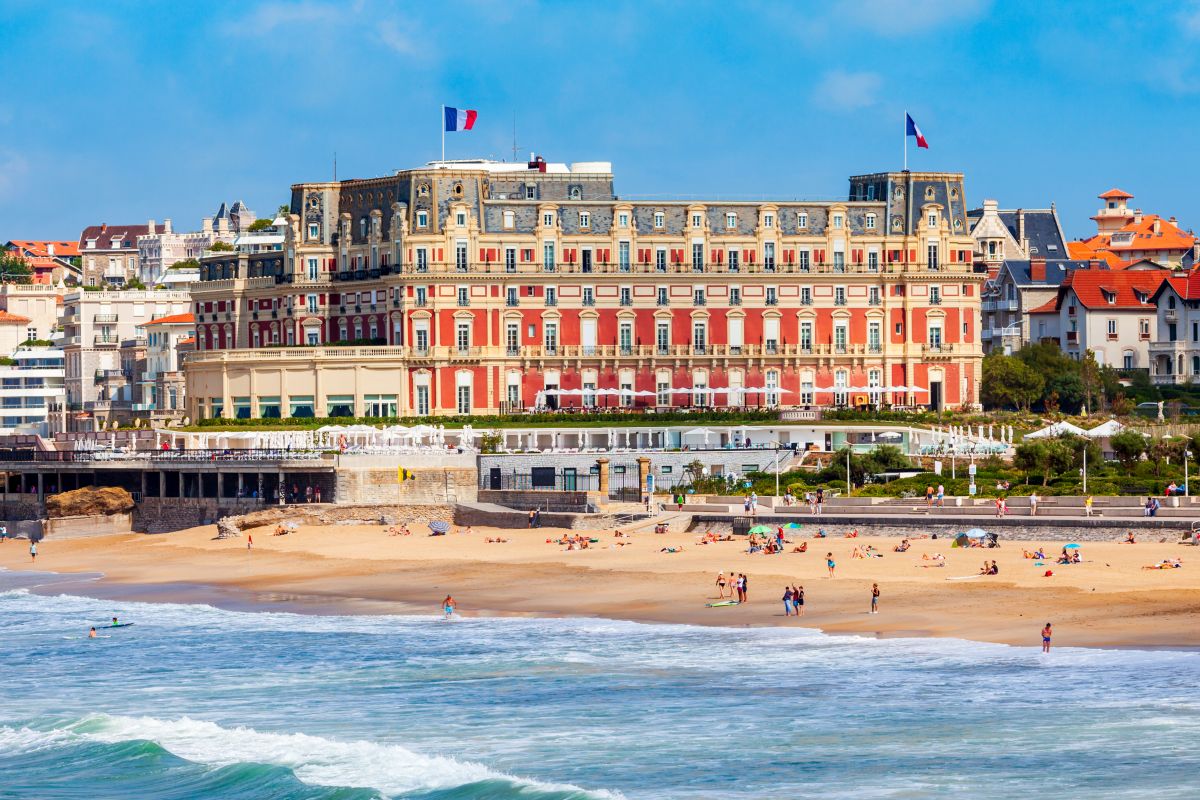
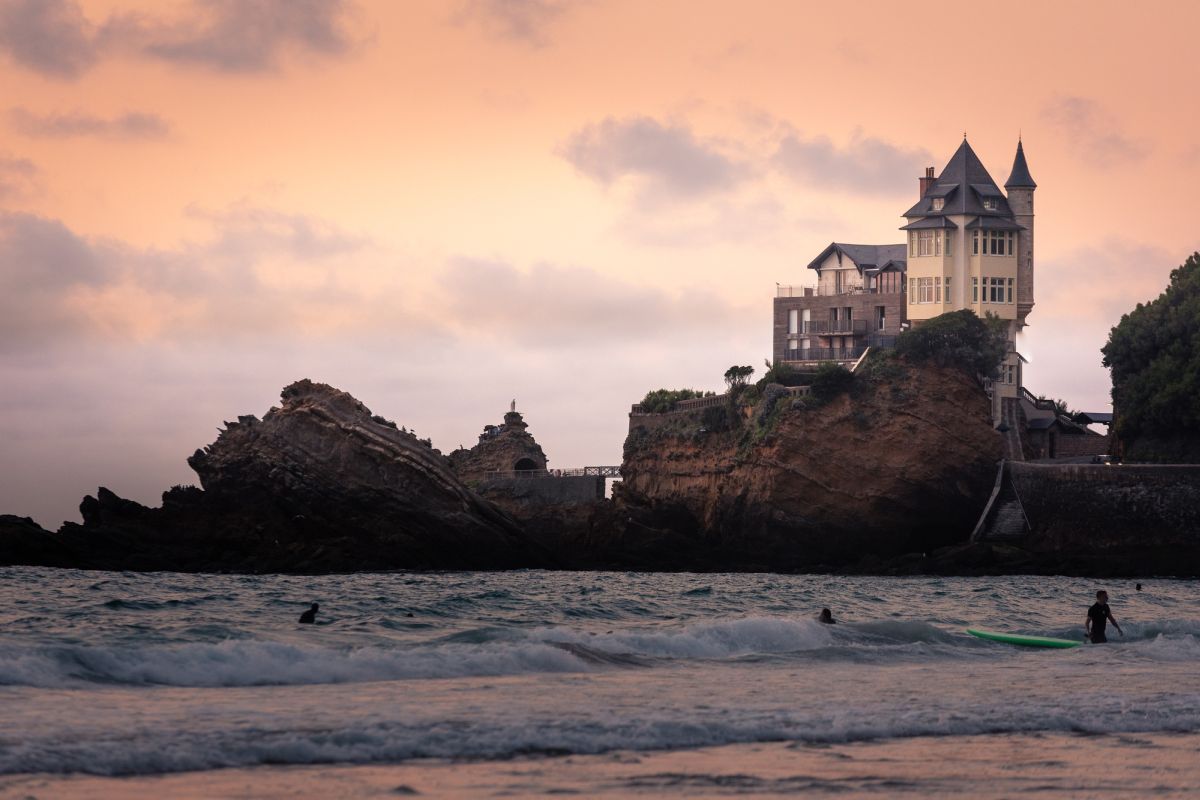
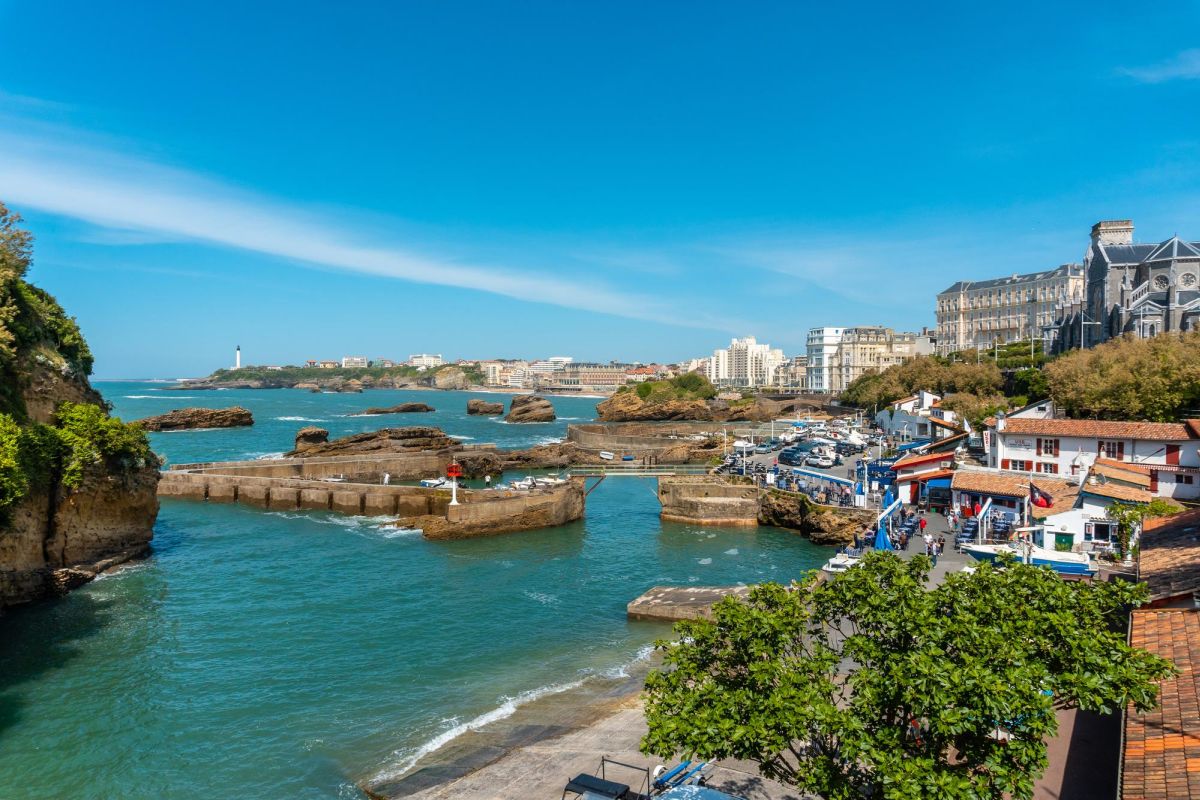

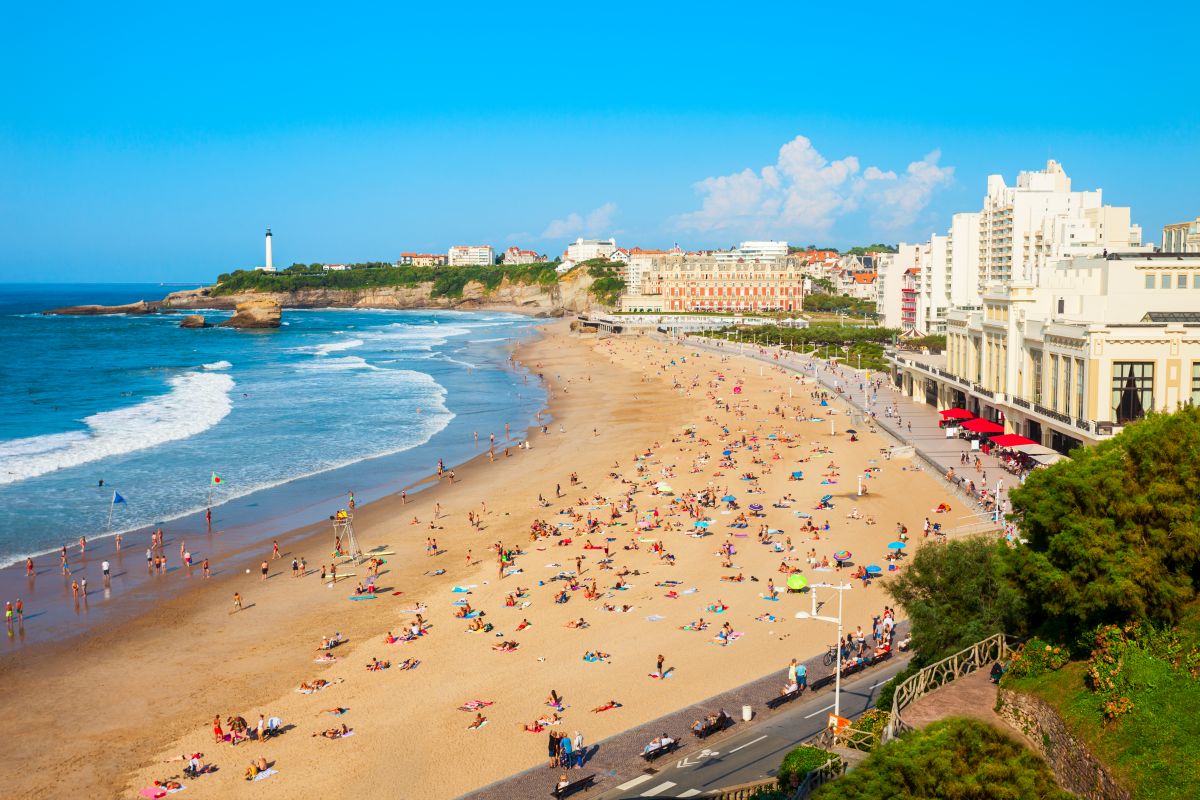

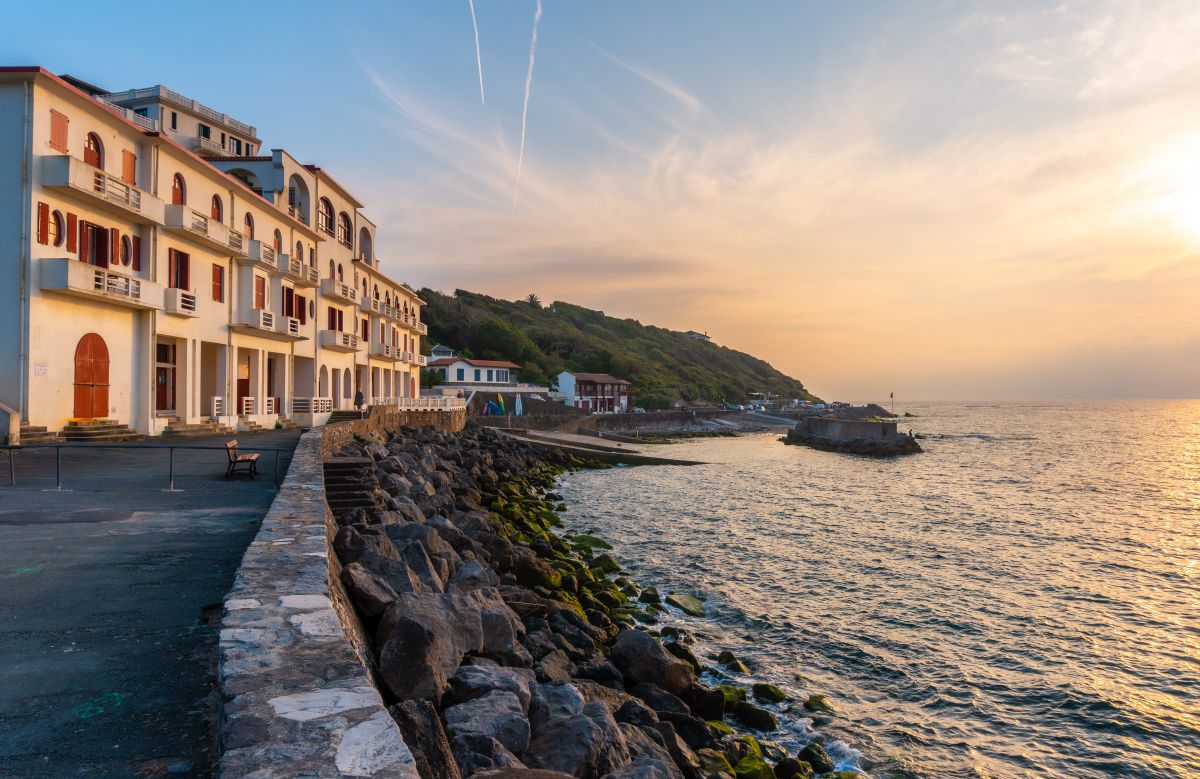



Surf lessons and Surfcamps gift voucher
Read more